#guomindang
Text

Hong Lu from Limbus Company is a Member of the Kuomintang!
#hong lu#limbus company#limbus#project moon#your fav is#ur fav is#your fav blog#kmt#kuomintang#gmd#guomindang#tridemism#your fav#republic of china#china#lbc#hong lu lbc
2 notes
·
View notes
Text
30 dramatic images of the 1942 Henan famine
New Post has been published on https://china-underground.com/2012/11/03/30-dramatic-images-of-the-1942-henan-famine/
30 dramatic images of the 1942 Henan famine
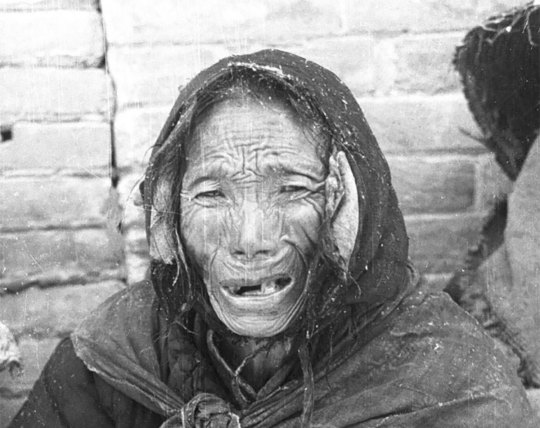
Henan Province was hit by a terrible famine between the summer of 1942 and the spring of 1943 that led to the death of 3 million people (other sources report 1 million deaths).
Related: Episodes of cannibalism in China during the famine; The famine during the Chinese Civil War; Rare historical photographs of the 1931 China floods
Another three million people then had to move to other regions to escape hunger. Famine was caused by strong drought, the ongoing destruction of fields by swarms of locusts, the domestic demand for supplies for the troops engaged against the Japanese but also by the unreasonable demands of the government who practically took all goods of the local farmers. A poor harvest turned into a colossal tragedy.
American and Time correspondent Theodore White gave us an eyewitness account since the Nationalist government in Chongqing decided to hide it. The images were taken by the American photographer Harrison Forman who traveled throughout Henan province to witness first-hand the famine of 1942–1943 and gives his account in his diary (Harrison Forman Diary, China, December 1942 – March 1943).
There were reports of cannibalism and White said: “In the mountain districts there were uglier tales of refugees caught on lonely roads and killed for their flesh. How much of this was just a gruesome legend and how much truth we could not judge. But we heard the same tales too frequently, in too widely scattered places, to ignore the fact that in Hunan human beings were eating their own kind.”
Great China famine images
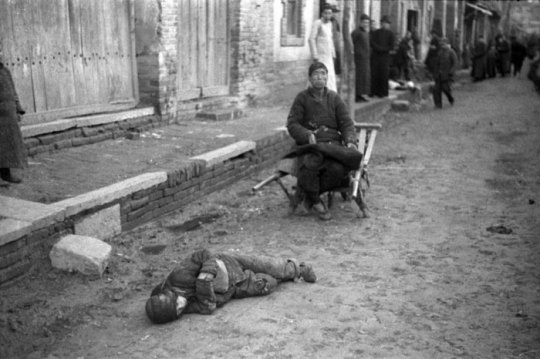




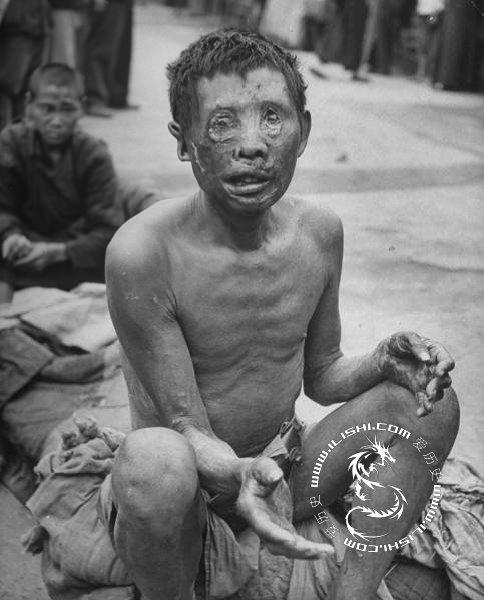


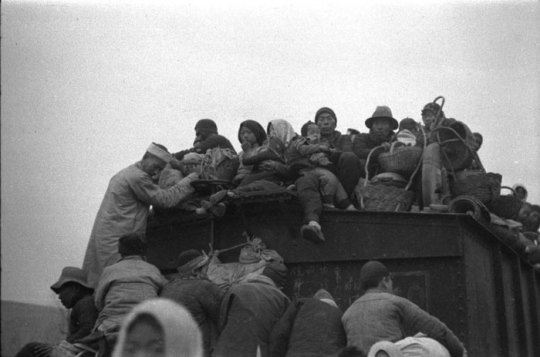




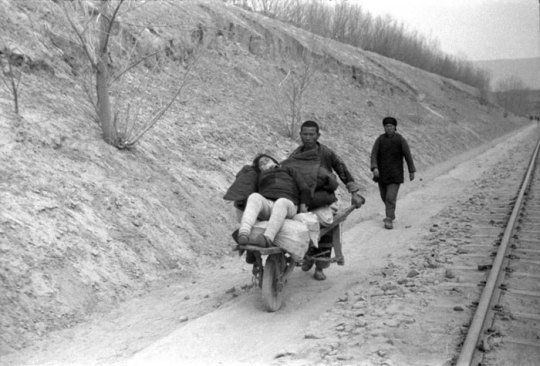

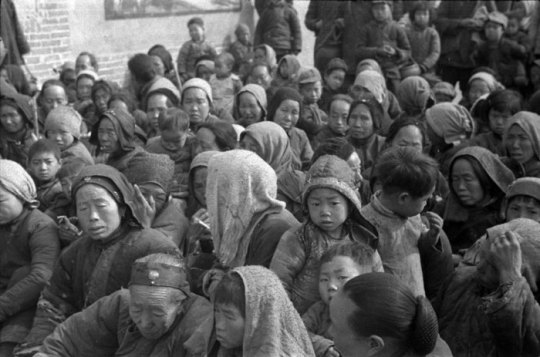





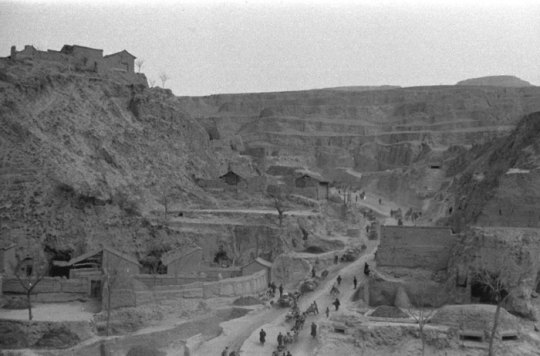





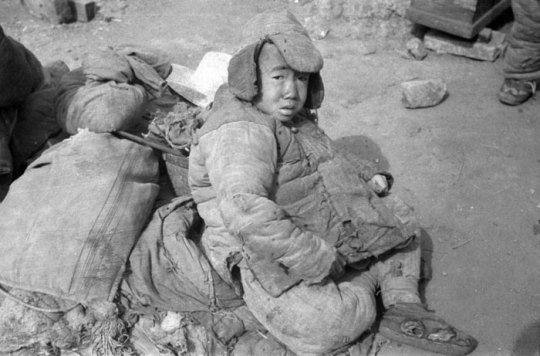
Sources
http://tuku.military.china.com , http://www.applet-magic.com/henanfamine.htm
topic: famine,famine in history,famine in China,China famine
#ChinaFamine, #Chonqing, #DroughtFamine, #FamineAndHunger, #FamineAroundTheWorld, #FamineHunger, #FamineInHistory, #FoodAndFamine, #Guomindang, #HarrisonForman, #Henan, #HenanFamine, #Images, #LifeMagazinePhotographs, #OldPhotographs, #OldPictures, #PicsOfStarvingChild, #PictureOfStarvingChild, #PictureOfStarvingPerson, #PicturesOfStarvation, #PicturesOfStarvingChildren, #SinoJapaneseWar, #StarvationInChina, #StarvingPeopleImages, #StarvingPeoplePictures, #TheodoreWhite, #WorldWarII
#china famine#chonqing#drought famine#famine and hunger#famine around the world#famine hunger#famine in history#food and famine#guomindang#Harrison Forman#henan#henan famine#images#life magazine photographs#old photographs#old pictures#pics of starving child#picture of starving child#picture of starving person#pictures of starvation#pictures of starving children#sino japanese war#starvation in china#starving people images#starving people pictures#theodore white#world war II
0 notes
Text
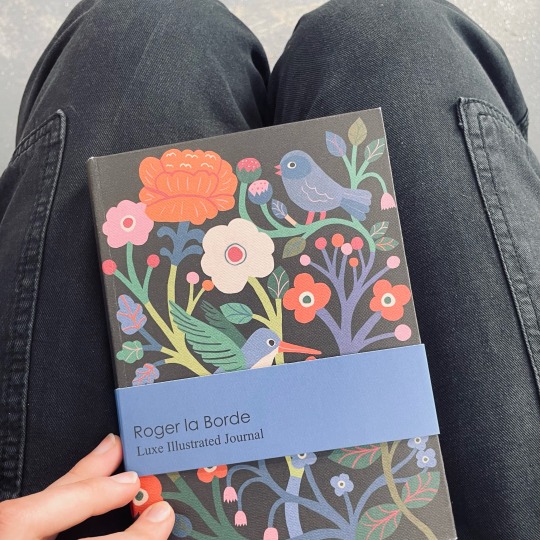



07.03.24
• 4 classes.
Entrepreneurship: we had a group-work day. We did some brainstorming for our end of the semester project. (Basically come up with a business idea and write a business plan).
Asian History: Guomindang vs CCP or China 1930s
Physics: nice and short. The prof let us go almost half an hour early.
Financial Management: quiz. Surprisingly easy this time. It’s the first time I got a 100.
• 1h 20min on Forest 🌳 to prepare questions for the interview (another assignment for entrepreneurship class) and send out an email to the interviewee.
Also, I went to talk about my essay yesterday. TA was really nice. There was a particular thesis structure that they were looking for and that my essay lacked hence B- She told me that I can come over with my next essay and get it checked before submitting it which I will likely do. Moral of the story — not sure about something — ask!
I wrapped up most of my work today, sooo I will officially be on my spring break after I’m done with my volunteering tomorrow ✨🎆 (I need it soooo much)
Oh and my friend gave me a birthday present. A little early because we won’t see each other throughout the spring break. The cute notebook on the first photo is the gift. It was soooo nice. He is one of my closest friends in uni and I was really touched :3
#academia#photography#studyblr#aesthetic#light academia#student life#uni life#uniblr#chaotic academic aesthetic#study inspiration#studystudystudy#study space#study session#studyspo#study motivation#study notes#study advice#studying#study blog#studyabroad#books & libraries#university#study aesthetic#studyinspo#fashion student#you don have to be perfect#it will be okay#spring semester#school break#chaotic academia
346 notes
·
View notes
Photo

China from 1912 to 1950
« Le Monde – Histoire et civilisations », n°94, mai 2023
by cartesdhistoire
The 1911 revolution led to the proclamation of the Chinese republic in 1912. Local military leaders, known as "warlords," held significant power and extended their control over various provinces until General Chiang Kai-shek consolidated his military and political authority. In 1927, he suppressed urban communists, who, after enduring several annihilation campaigns, managed to retreat after a challenging and decimating ordeal known as the Long March (1934-1935).
The Japanese invasion of Manchuria in 1931 was followed by their invasion of China proper in 1937. Communist forces emerged from the conflict strengthened and achieved an unexpected victory over Chiang Kai-shek's Guomindang. It was in 1934 that Mao Zedong rose to leadership in the Communist Party—though military operations were largely led by Chu Teh, Mao is credited as the theoretician of revolutionary warfare. Between 1936 and 1938, Mao authored his three most significant military works. Mao's innovation lies in utilizing the vanguard party, initially intended to educate the proletariat, to mobilize the peasantry. He also established close coordination between politics and the military at all levels (villages, provinces, national), emphasizing the protracted nature of conflict.
The aggression and severity of Japanese occupation enabled the Communist Party to position itself as the champion of Chinese nationalism. In 1948, without assistance from the USSR, the Chinese Communists managed to reverse the previously favorable situation for the Guomindang and seized power the following year. On October 1, 1949, the People's Republic of China was proclaimed. The communist victory was facilitated by the worsening economic situation, notably considerable inflation; prices increased by 150% annually from 1937 to 1945.
51 notes
·
View notes
Text
do you think Zhou Enlai was like "wow.. i don't know... I'm nervous about having to assasinate to protect the integrity of the communist party of china while it's underground and facing massive violence from the nationalists... is that ok? what are the moral implications of this action" and Mao was like "it's OK. Youre valid. it's always morally correct to kill the people who would sell you out to the guomindang"
10 notes
·
View notes
Text

The Nanchang Uprising was a Communist-led mutiny against the Guomindang (GMD/KMT) in response to their violent suppression of the Communists in Shanghai (the Shanghai Massacre) in 1927.
Prior to this mutiny, the CPC (Communist Party of China) lacked its own independent military, and instead was integrated into the National Revolutionary Army, the armed wing of the KMT.
Numerous Communist leaders, alongside KMT defectors, led their soldiers against the KMT and temporarily forced them out of Nanchang, but the Communists were eventually defeated and forced to retreat.
The Uprising is significant as many of the commanders who took part (for example, Zhou Enlai and Lin Biao) would go on to become prominent leaders within the Chinese Red Army and later the People's Liberation Army.
39 notes
·
View notes
Text
“ Per Pechino Taiwan è cinese dal 1683, quando fu conquistata dalla dinastia Qing, che però non ne fece una priorità. Assegnata come prefettura alla provincia del Fujian (Fokien), ivi integrata nel 1887, otto anni prima della cessione al Giappone (1895-1945), prima dell’arroccamento nell’isola e nei suoi arcipelaghi dei nazionalisti del Guomindang sconfitti da Mao nel 1949. Quanto basta a battezzarla recuperanda dalla Repubblica Popolare Cinese, cui non è mai appartenuta.
Pechino legittima tale pretesa con la continuità pentamillenaria della Cina, indipendentemente dalle dinastie o dai regimi al potere. Altra invenzione recente, distillata dalla propaganda della Prima Repubblica di Cina fondata nel 1911 da Sun Yat-sen. E ripresa entro diversa costellazione ideologica nella Cina di Mao subito dopo la morte del suo fondatore, che pretendeva di aver inaugurato la Nuova Cina. Oggi Xi Jinping insiste sui cinquemila anni di ininterrotta continuità del Drago. Vale la pena riportarne lo scambio di battute con Donald Trump nella Città Proibita di Pechino. È l’11 agosto 2017.
Trump: “La Cina può tracciare la sua storia fino a cinquemila anni fa”.
Xi: “La Cina ha una storia documentata di più di tremila anni”.
Trump: “Credo che la cultura più antica, si dice, sia l’Egitto, con ottomila anni”.
Xi: “Sì, l’Egitto è un poco più antico della Cina. Ma la civiltà cinese è una durevole cultura unica al mondo tramandata costantemente attraverso le generazioni”.
Trump: “Dunque questa è la vostra originaria forma di cultura”.
Xi: “Sì. La gente come noi può essere ritrovata fino a cinquemila anni fa. Abbiamo gli stessi capelli neri e la stessa pelle gialla. Noi ci chiamiamo i discenti del Drago”.
Trump: “Grande!”. *
È notevole come i capi di due imperi rivali trovino un linguaggio comune sulla profondità delle radici storiche che distingue le grandi civiltà. In questo ovviamente l’America non può competere, sicché l’apertura di gioco di Trump è da intendersi come atto di cortesia, subito avvelenato dall’evocazione dell’anzianità (esagerata) dell’Egitto. Eco a quattro decenni di distanza dell’altrettanto significativa battuta con cui il primo ministro Zhou Enlai si rivolse a Kissinger, inaugurando il primo “disgelo” sino-americano, per cui l’America era più antica della Cina perché aveva due secoli di storia contro i ventitré anni della Repubblica Popolare. Altra epoca, quando al regime di Mao interessava marcare la rottura con il passato imperiale e poi nazionalista, sicché il battesimo della “Nuova Cina”, nel 1949, s’ergeva a ora zero. “
* La conversazione fra Xi Jinping e Trump è ripresa in diretta l’11 agosto 2017 dalla televisione di Stato cinese Cgtn (China Global Television Network) strumento di influenza rivolto al resto del mondo. Cfr. https://news.cgtn.com/news/3267444f34597a6333566d54/share_p.html
---------
Lucio Caracciolo, La pace è finita. Così ricomincia la storia in Europa, Feltrinelli (collana Varia), novembre 2022. [Libro elettronico]
NOTA: il testo contiene un refuso, la data della visita del presidente Trump alla Città Proibita non risale all’11 agosto (11/8) ma all’8 novembre (8/11) del 2017.
#letture#scritti saggistici#saggistica#saggi brevi#geopolitica#Lucio Caracciolo#leggere#citazioni#Donald Trump#Cina#Repubblica Popolare Cinese#Xi Jinping#Taiwan#nazionalismo#relazioni internazionali#Pechino#Mao Zedong#Mao Tse-tung#La pace è finita#Sun Yat-sen#Città Proibita#tradizioni#libri#Stati Uniti d'America#grandi civiltà#Zhou Enlai#civiltà cinese#imperialismo americano#antico Egitto#storia
6 notes
·
View notes
Text
One more book of modern Asian military history to go:
Wrapped up the next, and ultimately the penultimate book in the sequence of Asian histories with this one. As the title says it covers the last phase of the Chinese Civil War in 1946-50 when Mao Zedong's PLA shattered the Guomindang and drove it into Taiwan, where the war has remained frozen ever since. This is a rare book covering the era that at least tries to avoid the idea of hindsight overshadowing the actual events and takes the idea that the PLA could have lost, which it very easily could. And asks why, with all the advantages up to and including Soviet recognition and friendliness never given to the CCP (and the Sino-Soviet split ultimately shows that Stalin was right to distrust Mao all along) Jiang managed to lose the war as decisively as he did.
The ultimate answer in the eyes of the book stem from the PLA developing a military means to face and defeat the Guomindang on terms it set for itself, while the Guomindang encountered the reality that after decades of limited to no formal authority in places having to take charge of it in the immediate aftermath of the war was anything but a blessing. Too, the Guomindang overextended itself and did not take seriously the prospect that the PLA would be able to shift anywhere near as swiftly as it did from guerrilla to conventional warfare. And unlike the PAVN in the Vietnam War the PLA very much did, by 1947-8 develop the means to deal one large-scale asskicking of the Guomindang after another to a point that a regime that briefly looked like it would be the face of the new China imploded so totally that the brief period of illusory triumph was revealed as just that.
The book's last chapter covers the Korean War as an extended aspect of this war in a development that makes no little sense given that it was part and parcel of the slapdash border security of Truman's era and that Mao desperately wanted a victory. And while he got a gruesomely bloody stalemate in the mountains after routing MacArthur's army on the Yalu, merely stalemating the USA after the long and brutal history of China serving as the Washington Generals of Asia was a sufficient victory to expand on the Civil War and underpin the PRC's sense of self-confidence to this day.
An interesting reality it brings into play as well is something that only makes sense. As with the USSR the PRC was born out of a civil war marked with multi-tiered foreign intervention. As with the USSR it began as more of a change of flags and verbiage and not of regime, and some of the histories of the PRC and USSR reflect very specific mirrors. At the flip side unlike in Russia, where the most traditional change of power was dying of 'Romanov Colic' (aka strangulation), China long had the tradition of various warlords securing an empire on horseback and then figuring out how to govern it. Thus, while revolutionary in many ways, the PLA was in others nothing more than Khubilai Khan and Khara Khitai on a much grander scale.
And in that mess of contradictions hinges all the aspects of PRC history from the 1950s to the present.
9/10.
2 notes
·
View notes
Text
[T]he Martinique-born Marxist Frantz Fanon scathingly suggest[ed] that “the culture that the intellectual leans towards is often no more than a stock of particularisms. He wishes to attach himself to the people, but instead only catches hold of their outer garments.” To Fanon, the “national culture” championed by anticolonial elites was typically a patchwork of superficial gestures of cross-class solidarity, offering little of material benefit to the people invoked. Many aspects of the cultural revolutionary project of [Guomindang] fascists during the 1930s—especially their constant invocations of the Confucian bonds of propriety, righteousness, integrity, and humility—rang like a “stock of particularisms.” Still, their self-understanding as national vanguards—simultaneously at one with the masses and leaders thereof—meant that they were attempting a closer connection. As much as they desired to reclaim an indigenous patrimony of which the country was still being divested, they sought to fuse the nation’s people into a single cooperative mass. Sometimes conceptualized as a machine, sometimes as an army, and sometimes as a living organism, all worthy parts of this mass were deemed vital to the successful functioning of the whole. Culture gave it shape, delimited its boundaries, and authorized a kind of hierarchically stratified sameness.
Maggie Clinton, Revolutionary Nativism
5 notes
·
View notes
Video
youtube
Tradition Repurposed: New Year’s Pictures, Cartoons and Posters around the Second Sino-Japanese War
The Hoover Institution Library & Archives presents the Fanning the Flames Speaker Series. This eleventh session is moderated by Alice Tseng, professor of Japanese Art and Architecture at Boston University and presented by Shaoqian Zhang, associate professor, East Asian Art History at Oklahoma State University. The “Tradition Repurposed: New Year’s Pictures, Cartoons and Political Posters around the Second Sino-Japanese War” virtual event is on Thursday, May 19, 2022 at 12:00 pm PDT | 3:00 pm EDT (60 minutes).
Historically, Sino-Japanese cultural exchanges were dominated by a China-oriented mentality. This relationship shifted abruptly in the late nineteenth century with Japan’s rapid westernization and industrialization, which coincided with the cultural and political implosion of the Qing Dynasty, and was further inverted as Japan became a world power and China struggled to reassemble itself. It was thus with a sense of justification that the Japanese advertised themselves as the legitimate protector of East Asian culture, and key Chinese cities under their occupation became a battleground for what Japan called the New Order in East Asia.
The influence of Japanese aesthetics on Chinese art had also become increasingly noticeable by the end of the Nineteenth century. However, not until around the Second Sino-Japanese War did the Chinese political and military agencies start paying attention to the effectiveness of Japanese visual propaganda strategies in China, especially to the exceptional Japanese skill at adopting traditional Chinese folk motifs. This lecture examines the subsequent war of propaganda prints between the Guomindang and the Japanese militarists during the 1930s and 1940s.
To learn more about the accompanying book (edited by Kay Ueda, curator of the Japanese Diaspora Collection at Hoover) and to see past events, videos, and highlights, please visit our interactive online exhibition website, Fanning the Flames: Propaganda in Modern Japan. Please also visit our exhibition, now open in Hoover Tower at Stanford University. For complete details please visit our exhibition web page.
#hoover institution#art#art history#japan#nianhua#posters#china#folk tales#deities#political figures#politics#culture#ccp#chinese communist part#mao zedong#propaganda#sino-japanese war#history#woodblock prints#printmaking
2 notes
·
View notes
Text
New Legislation Supports Doling Out Money to CIA Drug Runners from Indochina War
Jeremy Kuzmarov
In the 1990 movie, Air America, Mel Gibson and Robert Downey, Jr., play two Air America pilots who smuggle heroin while supporting U.S. proxies in the Vietnam War.
Air America was an airline run by the CIA previously called Civil Air Transport (CAT), which had been formed by General Claire Chennault and Whiting Willauer[1] to ferry supplies to the Chinese Guomindang (GMD) in its…

View On WordPress
0 notes
Text
Doppel Zehn – Taiwans Nationalfeiertag
In den vergangenen Wochen sind mir nach und nach die ganzen taiwanischen Flaggen in der Stadt aufgefallen und habe mich gefragt, was wohl für ein Ereignis bevorsteht und was sollte es schließlich anderes sein als der Nationalfeiertag?
Es war mir dann doch wieder relativ schnell präsent, weil der Tag als freier Tag in der Quartalsplanung steht und wir diesen Tag auch ganz grob im Unterricht angeschnitten haben. Apropos Unterricht, ich kann hier gerne nochmal ein bisschen zusammenfassen was wir im Unterricht zu Taiwans Geschichte gelernt haben:
Anfang des 16. Jahrhunderts entdeckte Portugal als erstes europäisches Land die Insel. Gut 100 Jahre später sind die Niederländer Süden Taiwans angekommen, während die Spanier sich zwei Jahre später im Norden nieder ließen. Daraufhin sandten die Niederlande eine Armee in den Norden, um sich das Handelsrecht auf Taiwan zu erkämpfen und gewann. Vor dieser Zeit lebten in Taiwan nur die indigene Bevölkerung und ein paar Chinesen, aber man konnte noch nicht von einem Staat sprechen.
Später kam Taiwan in Chinas Fokus und so sandte wiederum die Ming Dynastie (1368 – 1644) eine Armee nach Taiwan, um die Niederländer in die Flucht zu schlagen und die erste Regierung Taiwans zu gründen. Danach kamen mehr und mehr Chinesen nach Taiwan. Man kann das etwa mit der Entdeckung Amerikas vergleichen. Die indigene Bevölkerung zog sich teilweise in die Berge zurück oder heiratete Chinesen. Heute sind nur noch etwa 2% von Taiwans Bevölkerung indigen, das sind etwa 500.000 Menschen.
Mit dem Wechsel von der Ming- zur Qing Dynastie (1644 – 1911) wurde Taiwan offiziell chinesisches Gebiet. Hier geht es erstmal mit chinesischer Geschichte weiter:
Das Ende der Qing Dynastie war von internationalen Kriegen und inneren Unruhen, Aufständen und Bürgerkriegen geprägt, bis der Kaiser nach der Xinhai Revolution (prägende Revolution) schließlich auf seinen Thron verzichtete. Der Revolutionär Sun Yat-Sen sollte übergangsweise Präsident werden, rief schließlich die Republik Chinas aus (China: 1912 – 1949; Taiwan: 1912 bis heute) und gründete die Guomindang („Nationale Volkspartei“).
Chinas Politik war danach allerdings noch immer instabil und die innenpolitische Situation zog sich im Prinzip weiter so fort, wie sie schon vorher war, bis 1919 innerhalb einer großen Bewegung (Bewegung des vierten Mai) endgültig nach einem Neuanfang gefordert wurde. Das war eine Zeit kultureller Blüte: Es wurden viele Universitäten gegründet, der Austausch von Handel und Wissen mit dem Ausland kam ins Rollen und die wirtschaftliche und politische Lage begannen sich zu erholen. Übrigens habe ich mich den Großteil meines Studiums mit dieser Zeit, etwa von 1912 bis 1935, auseinandergesetzt, ein sehr interessanter Abschnitt chinesischer Geschichte.
Die Oktoberrevolution in Russland 1917 inspirierte China ebenfalls für ein sozialistisches und kommunistisches System, woraufhin 1921 die Kommunistische Partei Chinas (noch heute regierende Partei) gegründet wurde. Das Resultat: Zwei große Parteien, die beide unterschiedliche Vorstellungen hatten, wie sie das Land nun am besten wieder aufbauen sollten, was in weiteren Aufständen und Bürgerkriegen endete. Zusammengefasst war die Guomindang am Ende 1945 so sehr im Nachteil, dass sie nach Taiwan floh und dort eine Diktatur gründete. Mit der Guomindang flohen 1,5 Millionen Chinesen nach Taiwan. Während China 1949 die Volksrepublik Chinas ausrief, blieb Taiwan Republik Chinas.
Im Prinzip kann man sagen, dass Taiwan dann 1987 mit der Aufhebung des Kriegsrechts und der Gründung der (aktuell regierenden) Demokratischen Fortschrittspartei zur Demokratie wurde.
Achso, zwischendurch, 1894/95, verlor China den chinesisch-japanischen Krieg und musste Taiwan an Japan abtreten. Allerdings widersetzte sich Taiwans Provinzregierung und rief seine eigene Republik aus, sodass Japan Taiwan in einem Feldzug besetzen musste, bis die Guomindang 1945 nach Taiwan kam. Während dieser Zeit hat Taiwan einen großen Einfluss Japans erfahren. Der Regierungssitz wurde z.B. von den Japanern errichtet.
Das Datum des 10. Oktober ist der Beginn des Wuchang-Aufstands (großer, prägender Aufstand), der in der Xinhai-Revolution und daraufhin in der Gründung der Republik Chinas endete.
Neben einer Reihe von Reden während der Festlichkeiten veranstaltet das beste Mädchengymnasium Taipeis, eine Eliteschule und eine der besten des Landes, eine Parade. Hier könnt ihr euch ein Video dazu ansehen. Es ist wirklich beeindruckend und die Parade ist sehr bekannt.
Fun Fact: Alle Kolonialmächte, die nach Taiwan kamen, staunten nicht schlecht über diese wunderschöne Natur und Landschaft, die das Land zu bieten hat und wurde stets als „Ilha Formosa“ („Schöne Insel“) bezeichnet. Der Name „Formosa“ hat sich über die ganze Zeit als weiterer Name etabliert.

Flaggen, überall Flaggen
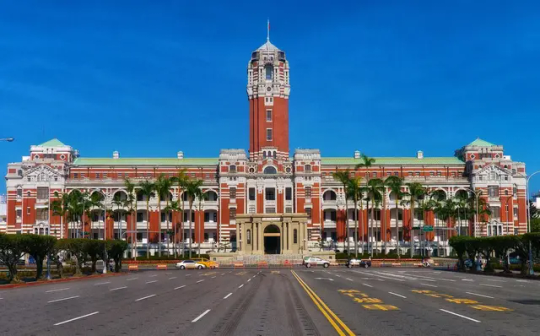
Presidential Palace (aus dem Internet)

"Formosan Animals", Bild aus dem Zoo
0 notes
Photo

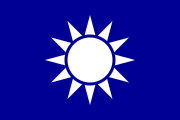
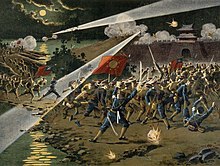

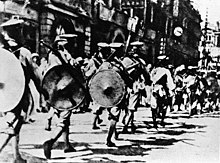
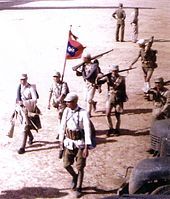


337) Kuomintang (KMT) lub Guomindang (GMD), Nationalist Party of China (NPC), Chinese Nationalist Party (CNP) (chiń. upr. 中国国民党; chiń. trad. 中國國民黨; Zhōngguó Guómíndǎng, Chungkuo Kuomintang dosł. „Narodowa Partia Chin”) – partia utworzona w Chinach w 1912 przez Sun Jat-sena i oddana w sprawowanie przez Song Jiaorena. Partia rządząca w Republice Chińskiej w latach 1928–2000 i 2008–2016. Pierwotnie reprezentowała tzw. chiński socjalizm, lecz z czasem przeszła na pozycje prawicowe. Poprzednikiem Kuomintangu było Stowarzyszenie Odrodzenia Chin, walczące o obalenie monarchii w Chinach na początku XX wieku. Kuomintang został założony przez Song Jiaorena i Sun Jat-sena 25 stycznia 1912 roku, tuż po rewolucji Xinhai z 1911 roku. Początkowo partia miała większość w pierwszym Zgromadzeniu Narodowym (parlamencie chińskim). Liderem został Sun Jat-sen (wówczas premier Chin). Kuomintang starał się nie dopuścić do erozji demokracji i koncentracji władzy w rękach prezydenta, Yuan Shikaia. Odpowiedzią na ostateczne ustanowienie dyktatury tego ostatniego było powstanie w 1913 roku, szybko stłumione przez Yuana, który ogłosił się cesarzem Chin dwa lata później, w 1915 roku. Po początkowych porażkach Suna z Chińską Partią Rewolucyjną (zignorowaną przez większość republikanów) w 1914 roku, zdecydował się na reaktywację Kuomintangu kilka lat później. Kuomintang został reaktywowany przez Suna 10 października 1919 r. Odrodzona partia nie była uznawana za suwerena Chin przez państwa zachodnie, przez co musiała się zwrócić o pomoc do Związku Radzieckiego. Efektem tej prośby było wysłanie w 1923 roku misji radzieckiej pod przewodnictwem Michaiła Borodina, mającej pomóc nacjonalistom w zjednoczeniu Chin. Komintern zmusił chińskich komunistów do podporządkowania się Kuomintangowi. Po śmierci Sun Jat-sena, liderem Kuomintangu po krótkich walkach o przywództwo nad partią został Czang Kaj-szek, dowódca Akademii Whampoa, głównej szkoły oficerskiej Chin okresu międzywojennego. Czang Kaj-szek zdecydował się zjednoczyć Chiny poprzez zniszczenie sił północnych watażków oraz przejęcie kontroli nad Pekinem, gdzie była ulokowana siedziba nominalnego rządu chińskiego (kliki Beiyang; rząd ten nie sprawował faktycznej kontroli nad jakąkolwiek prowincją Chin). Ekspedycja północna, jak została nazwana ofensywa sił Kuomintangu, była zdecydowanym sukcesem. Nawet zerwanie Czanga ze Związkiem Radzieckim i lewicą KMT (Wang Jingwei) oraz komunistami, a także incydent nankiński (splądrowanie konsulatów Stanów Zjednoczonych, Wielkiej Brytanii i Francji w marcu 1927 roku przez żołnierzy Kuomintangu) nie przeszkodziły w odniesieniu zwycięstwa nad militarystami. Zwycięstwo Kuomintangu i Czang Kaj-szeka w 1927 r. przyniosło chwilową stabilizację polityczną Chin oraz rozwój ekonomiczny, większość osiągnięć z tej epoki (tzw. dekady nankińskiej) została zaprzepaszczona w wyniku agresji Japonii w 1937 r. oraz późniejszej chińskiej wojny domowej. Chińska Partia Narodowa w trakcie następnych 10 lat przeszła znaczącą transformację. Pod wpływem sukcesów, wzmocnienia roli wojska oraz samego Czang Kaj-szeka kosztem cywili, a także zerwania sojuszu z komunistami, Kuomintang przeszedł na pozycje prawicowo-autorytarne. Organizacja partii, pomimo niechęci lidera do Związku Radzieckiego i komunizmu, była wzorowana na organizacji partii komunistycznej ZSRR. Kuomintang współpracował z wieloma organizacjami i liderami muzułmańskimi, o czym mogą świadczyć kariery Bai Chongxi, generała i ministra obrony. Polityka Kuomintangu aż do śmierci Czang Kaj-szeka była inkluzywna wobec mniejszości narodowych. W ciągu dekady nankińskiej zagrożenie ze strony Japonii nie dawało się ignorować. Po części z powodu incydentu mukdeńskiego i zajęcia Mandżurii w 1931 r. przez Armię Kwantuńską, Czang Kaj-szek podjął działania zbrojne przeciwko komunistom. W wyniku dużych strat zadanych przez wojska Kuomintangu, zmuszeni oni byli do podjęcia Długiego Marszu do prowincji Shaanxi, która stała się ich główną bazą aż do końca II wojny światowej. Sojusz Kuomintangu i komunistów, wymuszony przez uprowadzenie Czang Kaj-szeka przez Zhanga Xuelianga i komunistów chińskich (tzw. incydent Xi’an z grudnia 1936 r.) bardzo szybko uległ dekompozycji. De facto na wielu frontach obydwie formacje działały odrębnie, a nawet zwalczały się. Komuniści chińscy często nie podejmowali walki z Japończykami woląc aby to siły Kuomintangu walczyły i wykrwawiały się. Polityka finansowa Kuomintangu przyniosła bardzo szybki wzrost inflacji, a następnie wywołała hiperinflację. Rząd nacjonalistycznych Chin nie był w stanie kontrolować rozdziału żywności, co zniechęcało ludność Chin do Kuomintangu i umacniało przekonanie o korupcji i nieudolności partii, rządu, a także lidera, Czang Kaj-szeka. Katastrofalna polityka ekonomiczna oraz demobilizacja wojska tuż po kapitulacji Japonii przyniosły wielu zwolenników komunistom. Choć lokalne walki trwały przez cały czas, wojna domowa na pełną skalę ze wspieranymi przez Związek Radziecki komunistami wybuchła dopiero w 1945. Do 1949 komuniści opanowali większość Chin, Kuomintang został u władzy jedynie w świeżo zdobytym Tajwanie. Wraz z nacjonalistami chińskimi uciekło około 2 miliony ludzi, licząc wszystkich uchodźców i siły zbrojne ewakuowane do Tajwanu. W 1945 roku wyspa Tajwan zajmowana od 1895 roku przez Japonię powróciła pod panowanie chińskie. KMT ustanowiło administrację, na czele której stanął generalny gubernator Chen Yi. Przybyli z kontynentu urzędnicy dość szybko dali się poznać od złej strony pogardzając miejscową ludnością i dyskryminując m.in. w dziedzinie ekonomicznej. Skonfiskowane Japończykom setki zakładów przemysłowych i kopalni oraz dziesiątki tysięcy domów trafiały do rodzin lub znajomych urzędników i wojskowych. Powszechny nepotyzm i korupcja lokalnych władz opanowanych całkowicie przez KMT oraz brutalność policji dodatkowo zaogniały sytuację. 27 lutego 1947 roku chińscy agenci z Biura Monopolu Tytoniowego w Tajpej podczas akcji przeciwko nielegalnym handlarzom ciężko pobili kobietę sprzedającą papierosy. Kiedy wzburzony wydarzeniem tłum Tajwańczyków ruszył przeciwko agentom ci otworzyli ogień zabijając jedną osobę i raniąc wiele innych. W dniu 28 lutego 1947 wielotysięczna grupa demonstrantów udała się pod siedzibę gubernatora domagając się aresztowania sprawców. Jednak w odpowiedzi policja i żandarmeria użyła broni strzelając do zgromadzonych ludzi z karabinów maszynowych. Gubernator Chen Yi na obszarze całej wyspy wprowadził stan wyjątkowy. Tajwańczycy spontanicznie zorganizowali oddziały, które zdobyły broń z magazynów wojskowych i przystąpili do walki ze znienawidzonym reżimem Kuomintangu. Przestraszony obrotem sytuacji Czang Kaj-szek wysłał na wyspę dodatkowe oddziały wojska i rozkazał bezwzględne rozprawienie się z buntownikami. Żołnierze szybko poradzili sobie z uzbrojonymi powstańcami i zaczęła się masakra miejscowej ludności cywilnej często niemającej nic wspólnego ze zbrojnym buntem. Otwierano ogień z ciężarówek do każdego podejrzanego człowieka zabijając w ten sposób wiele osób. Schwytani powstańcy i cywile uznani za sympatyków rebelii byli rozstrzeliwani w masowych egzekucjach bez sądu. Ofiarą tortur, egzekucji i uwięzienia bez sądu padło 140 000 Tajwańczyków. Z tej liczby zostało z rąk żołnierzy reżimu Kuomintangu zamordowanych około 30 000 ludzi. Wydarzenia te często określane mianem „incydentu 28 lutego” doprowadziły do ustanowienia całkowitego zdominowania Tajwanu przez Chińczyków z kontynentu, którzy zasilali kadry miejscowego Kuomintangu kontrolującego nie tylko życie polityczne, armię, policję, sądownictwo i administrację, ale i takie dziedziny jak gospodarka, media, edukacja i kultura. Doprowadziło to do wywołania trwałego podziału między stanowiącymi mniejszość (12% ogółu) Chińczykami kontynentalnymi, a zepchniętą na margines większością (86%) Chińczyków tajwańskich (rodowici Tajwańczycy wywodzący się z chińskich osadników przybyłych na wyspę w XVII i XVIII wieku). Stopniowa liberalizacja reżimu KMT w latach 80. pozwoliła na powolną emancypację tajwańskich Chińczyków aż do pełnego równouprawnienia w początkach lat 90. Demokratyzacja przyniosła ze sobą nie tylko wolność polityczną, ale i otworzyła zakazaną wcześniej dyskusję na temat niepodległości Tajwanu (obecnie w dalszym ciągu Republika Chińska). Czang Kaj-szek, który w 1950 roku został prezydentem Republiki Chińskiej, oraz przedwojenny parlament zdecydowali się w trakcie wojny domowej na wprowadzenie poprawek do konstytucji, które były przedłużane aż do 1991 roku. Powodem tak długiego utrzymywania autorytaryzmu na Tajwanie była wiara w odzyskanie Chin kontynentalnych. Upadek powstania chińskich muzułmanów w latach 50. oraz porażka wojsk Kuomintangu w prowincji Yunnan, graniczącej z Birmą przypieczętowały porażkę nacjonalistów w wojnie domowej. Do lat 70. przeprowadzono reformę rolną, rozwinięto znacząco gospodarkę Tajwanu oraz wprowadzono samorząd terytorialny oparty na demokratycznych zasadach. Republika Chińska do 1971 roku była członkiem Organizacji Narodów Zjednoczonych. Od lat 70. zaczęto wybór nowych posłów, na miejsce starzejących się posłów, którzy uzyskali mandat przed 1949 roku. W latach 80. Kuomintang przestał być jedyną partią w państwie i zaczął funkcjonować w ramach demokracji wielopartyjnej. W 1991 roku stan wyjątkowy został zniesiony, kiedy prezydent Lee Teng-hui anulował zmiany w konstytucji, przeprowadzone w 1948 roku i utrzymywane aż do końca zimnej wojny. Część działaczy Kuomintangu w trakcie chińskiej wojny domowej stworzyła własną partię, uznając się za jedynych spadkobierców dziedzictwa Sun Jat-sena. Jest to partia podporządkowana de facto Komunistycznej Partii Chin.
Przewodniczący Kuomintangu:
Song Jiaoren (1912–1913)
Sun Jat-sen (1913–1914 i 1919–1925)
Zhang Renjie (1925–1926)
Hu Hanmin (1927–1931)
Wang Jingwei (1931–1933)
Czang Kaj-szek (1933–1975)
Chiang Ching-kuo (1975–1988)
Lee Teng-hui (1988–2000)
Lien Chan (2000–2005)
Ma Ying-jeou (2005–2007)
Wu Po-hsiung (2007) (tymczasowo)
Chiang Pin-kung (2007) (tymczasowo)
Wu Po-hsiung (2007–2009)
Ma Ying-jeou (2009–2014)
Wu Den-yih (2014–2015) (tymczasowo)
Eric Chu (2015–2016)
Huang Ming-hui (2016) (tymczasowo)
Hung Hsiu-chu (2016-2017)
Lin Junq-tzer (2017) (tymczasowo)
Wu Den-yih (2017–2020)
Lin Rong-te (2020) (tymczasowo)
Johnny Chiang (od 2020).
0 notes
Text
i think the thing that makes me see red the most about the us/china fight over taiwan is that neither of them gives a shit about taiwan. in a perfect world everyone would leave taiwan alone and let it do its thing but bc of its geography china is never ever going to give it up, esp to its biggest adversary, nevermind the history which i could also rant for ages about. the ccp fucked up when it didn’t crush the guomindang entirely back then like this is literally why taiwan is a problem today. china won’t ever get over its fucking pride over losing taiwan to the fleeing guomindang party and will never acknowledge that it’s now essentially a country in all but name and will always see it as in illegitimate offshoot gov of china, and it’s never going to allow america to have a major presence 80 miles off its coast. the us wants taiwan so it can be 80 miles off china’s coast and exert influence in the pacific and maintain its reliance on taiwan’s semiconductor industry
preserving democracy my ass just call a spade a spade
0 notes
Text
I (child of Chinese immigrants) Study China’s History Under the Mao and Deng Eras
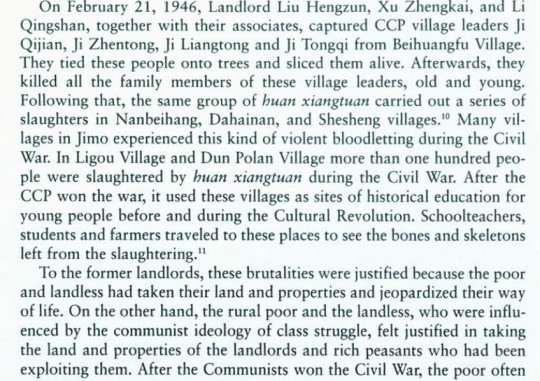
(ID: On February 21, 1946, Landlord Liu Hengzun, Xu Zhengkai, and Li Qingshan, together with their associates, captured CCP village leaders Ji Qijian, Ji Zhentong, Ji Liangtong, and Ji Tongqi from Beihuangfu Village. They tied these people onto trees and sliced them alive. Afterwards, they killed all the family members of these village leaders, old and young. Following that, the same group of huan xiangtuan carried out a series of slaughters in Nanbeihang, Dahainan, and Shesheng villages. Many villages in Jimo experienced this kind of violent bloodletting during the Civil War. In Ligou Village and Dun Polan Village more than one hundred people were slaughtered by huan xiangtuan during the Civil War. After the CCP won the war, it used these villages as sites of historical education for young people before and during the Cultural Revolution. Schoolteachers, students and farmers traveled to these places to see the bones and skeletons left from the slaughtering. To the former landlords, these brutalities were justified because the poor and landless had taken their land and properties and jeopardized their way of life. On the other hand, the rural poor and the landless, who were influenced by the communist ideology of class struggle, felt justified in taking the land and properties of the landlords and rich peasants who had been exploiting them. After the Communists won the Civil War, the poor often...
End ID)
(the book being referenced is The Unknown Cultural Revolution: Life and Change in a Chinese Village, by Han Dongping, someone who grew up in poor rural China during the Cultural Revolution.)
this is just for myself to log stuff that i read and add screenshots+opinions and interpretations. if you want to throw in your own two cents feel free, but kindly don’t be a jerk. will be continually reblogged so i can add stuff as i go through the books and articles i’ve got loaded in my tabs.
for some context beforehand: china, before the CCP, was under the control of the Guomindang (Chinese nationalist party). Its leader at the time, Jiang Jieshi (Chaing Kai-shek, if you’re unfamiliar) was a major jerk. i mean. he liked to do casual murders and purges of communists, including his own former colleagues (not cool). under his rule, china was not in good conditions (read: dirt poor). most of the guomindang were landlords, rich bastards, and the like who made a living off of theft of poor people and the working class.
(fun fact: my great-grandfather on my mom’s side was in the guomindang and was a landlord, fun stuff. during the liberation movement he lost his land cause it got redistributed. somehow our family still kept some of its wealth, including jewelry made of Actual Solid Gold. i really don’t want to wear it now, considering what it’s the product of. sorry mom but i don’t think great-granddad was the good guy in this situation. the screenshot at the top of the post should make it clear exactly what the landlords during the liberation movement had fun doing. idk if my great-grandfather was a part of it but he was a part of that institution, for sure. sorry mom.)
even before Jiang Jieshi, china was under what i have to say is colonial influence. rich american people were just. there. and didn’t have to follow the laws or respect the natives. and they thought they were helping us at the time (they were not, fuck off from our country). this is never a good thing and obviously china wanted independence, so the revolution mood was already brewing even before the second sino-japanese war, Mao Zedong, and the Civil War.
first update will probably be on Mao Zedong and his policies. gonna try and look at the good and the bad of his legacy. remember kids: nobody is perfect, Mao made some grievous mistakes but his legacy isn’t only defined through death and starvation. don’t doublestandard communists and excuse capitalists.
(oh but if you’re wondering: i’m definitely not pro-capitalist lolol. a system of privatization whose goal is profit and infinite growth, featuring competition and a free market fueled by ‘supply and demand’, which of course trends towards monopoly and corruption and absolute economic dictatorship in the hands of a few after years? hell no. socialism superior screw off.)
1 note
·
View note
Text
Année 1917 (Octobre)
Evénements
En Chine, hostilités entre les forces du Guomindang réfugiées à Shaghai et les militaires du Nord.
Russie: le Parti bolchévique obtient la majorité au Iie Congrès panrusse des Soviets.
7 octobre, France: retour à l’heure normale
13 octobre, Portugal: Miracle du soleil, ou la danse du soleil: phénomène solaire observé à Fatima, dans le cadre de ses apparitions mariales
15…

View On WordPress
0 notes